‘Endleaves’, or ‘endpapers’ are the first blank leaves of paper you come across when opening the book, and the final blank pages at the end. Found between the front or rear of the main textblock and the front and rear covers of the book, then, they are intended to protect the first leaves of text. The ‘paste-down’ is the half of the first sheet of endpapers which has been adhered to the inside of the boards or cover of the book (literally, pasted down). Endleaves that are not pasted-down to the cover or boards are usually described as being ‘free’.
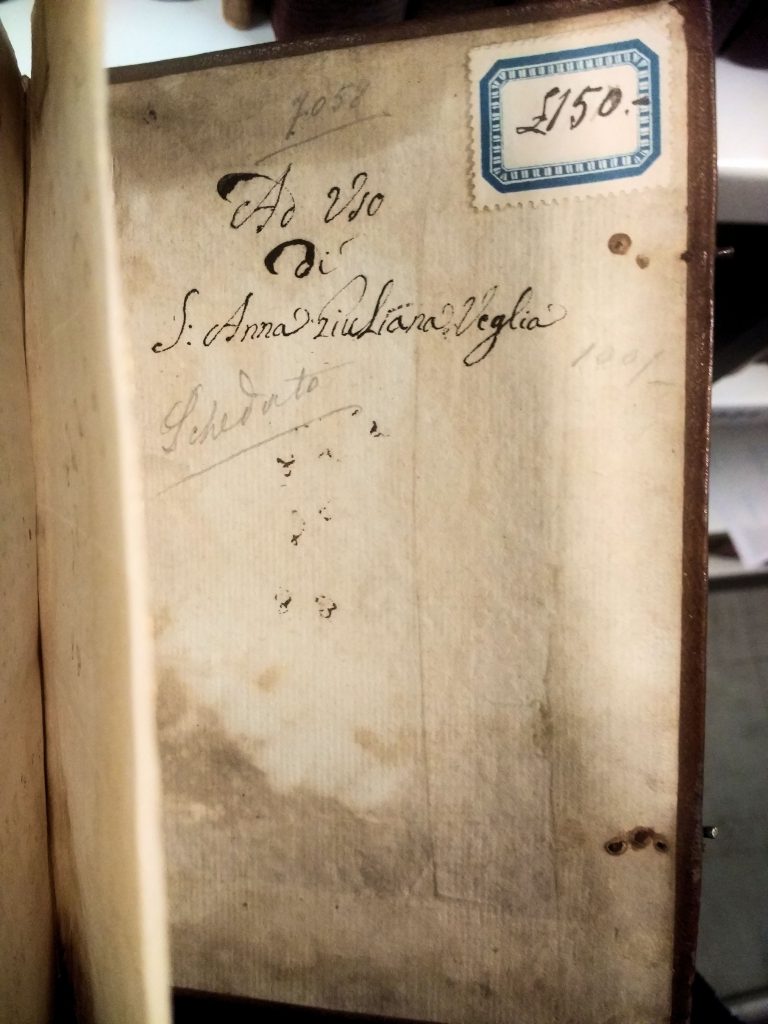
Paste-down is a useful term to know because it appears regularly in catalogue records. This is primarily because the paste-downs of a book are often where we find a number of interesting features – such as ownership inscriptions, bookplates, bookseller’s labels, previous classmarks – which have been added after publication and help to tell the unique history of that particular book (to use another ‘p’ term, we call this the book’s provenance).
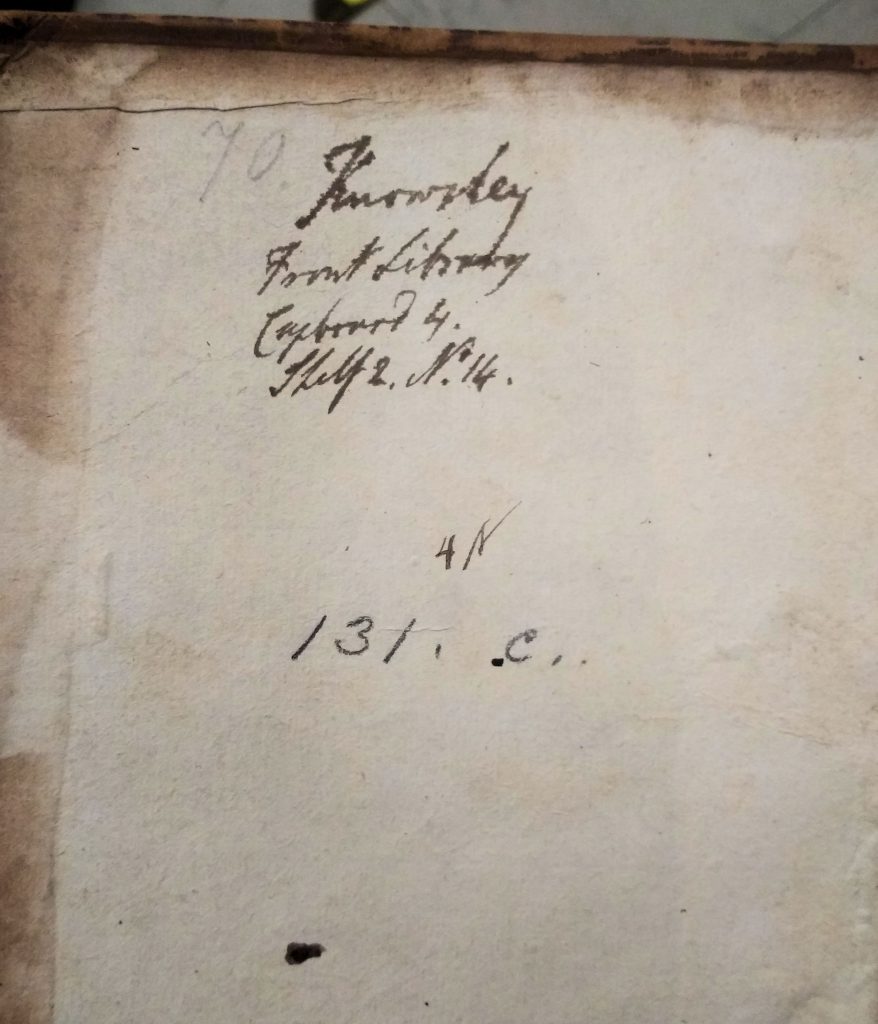
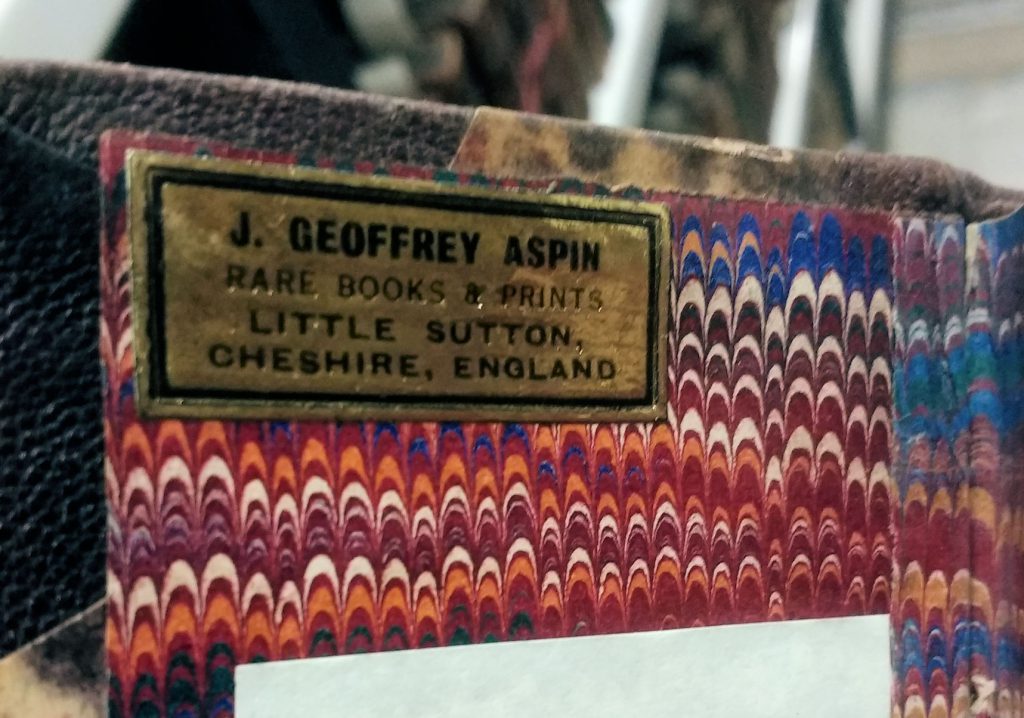
Another reason paste-downs may be of particular interest is that they can sometimes feature coloured or patterned paper:

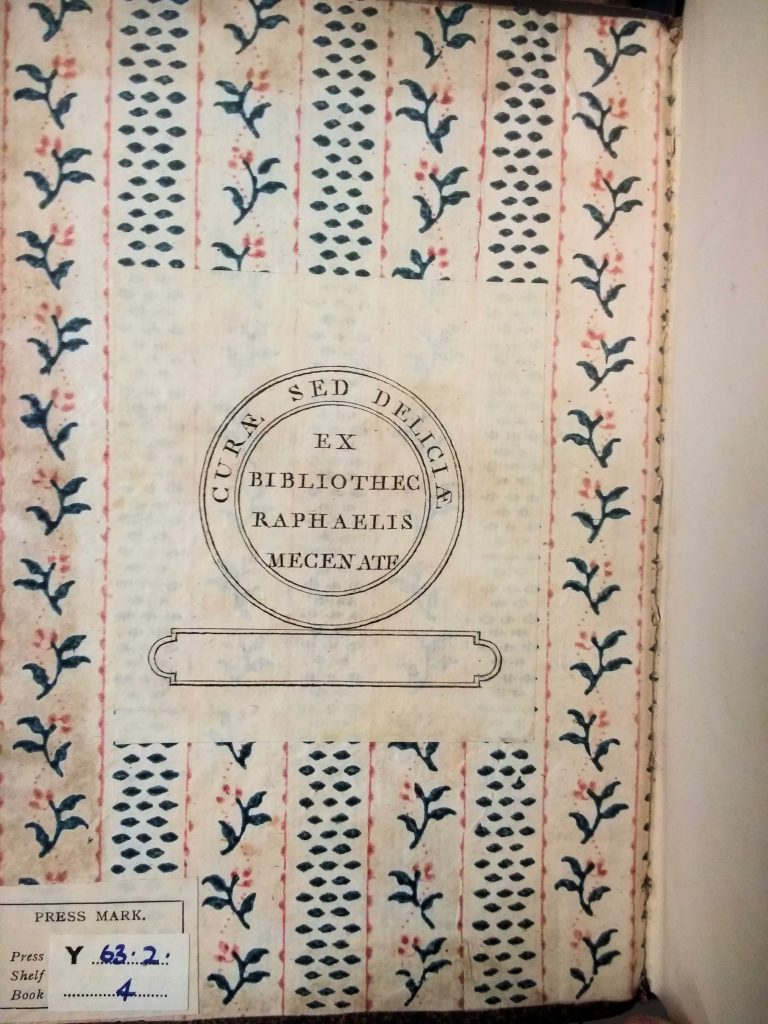
Front paste-down with bookplate. 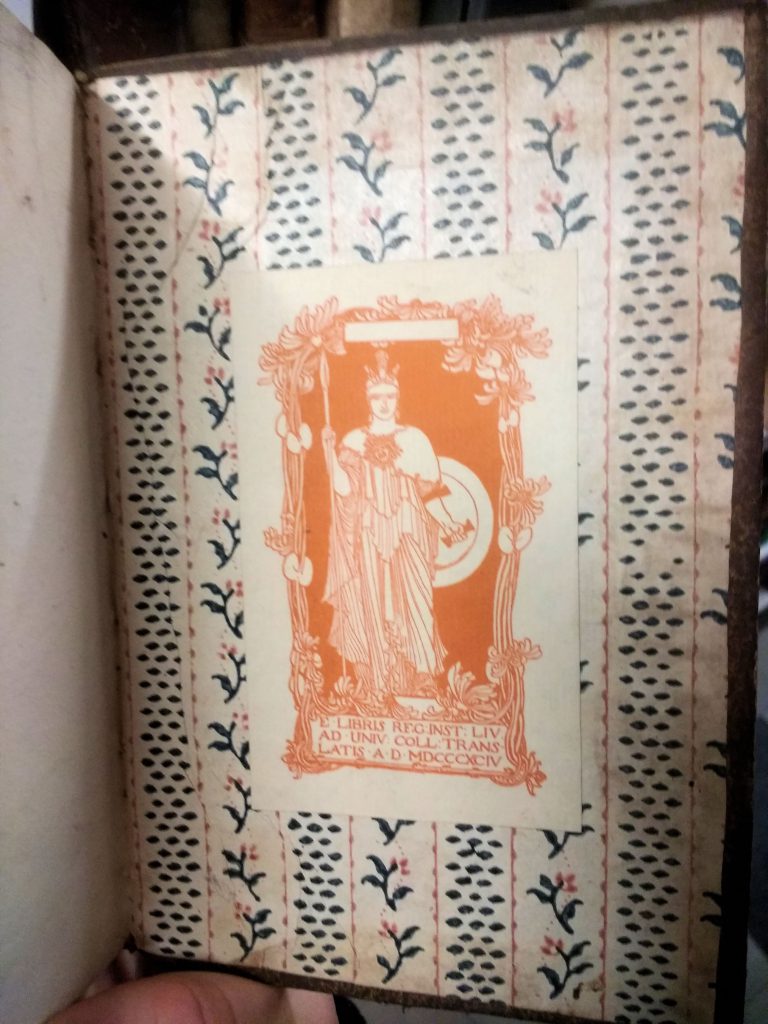
Rear paste-down of the same book, with a second bookplate.